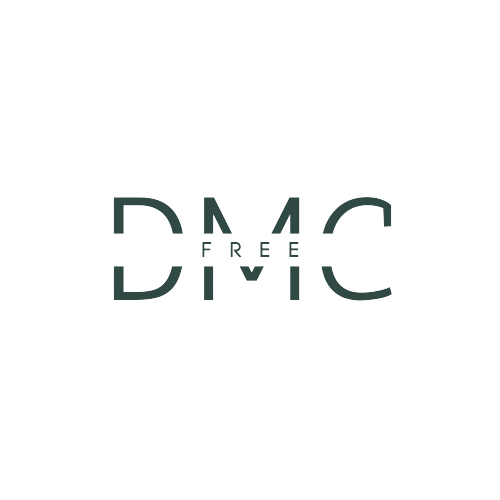
The digital age has made an online presence more crucial than ever. From startups to global corporations, a well-functioning website is the heart of branding, operations, and customer interactions. Behind every powerful website, there’s a robust web development team. Understanding the structure and roles within this team provides insights into how great digital products come to life.
Table of Contents
What Constitutes a Web Development Team?
A web development team is a collective of diverse roles, each bringing a unique skill set to the table. From front-end wizards to database gurus, this team ensures that a website isn’t just aesthetically pleasing but also functional, secure, and efficient.
Wondering about the potential earnings in this field? Check out “Full-Stack Web Salaries” for an in-depth look.
Web Development Team: Key Roles and Responsibilities
| Position | Task | Estimated Annual Salary ($) |
|---|---|---|
| Front-End Developer | Design & develop the visual aspects of a website. | 70,000 – 90,000 |
| Back-End Developer | Handle server-side logic, databases, & application integration. | 80,000 – 100,000 |
| Full-Stack Developer | Manage both front-end & back-end processes. | 90,000 – 110,000 |
| UI/UX Designer | Ensure the user interface is intuitive & attractive. | 60,000 – 80,000 |
| Database Administrator (DBA) | Oversee database integrity, structure, & security. | 85,000 – 105,000 |
| Quality Assurance (QA) | Test & ensure the website functions as intended. | 50,000 – 70,000 |
| Project Manager | Oversee project timelines, communication & scope. | 75,000 – 95,000 |
The above salary figures are estimates and may vary based on location, experience, and company size.
Diving Deeper: Agile Web Development
In the ever-evolving sphere of web development, methodologies play a pivotal role in ensuring timely and effective outcomes. Among these, “Agile Web Development” stands out. Agile promotes adaptive planning, evolutionary development, early delivery, and flexibility. A web development team following Agile ensures a more collaborative approach, thus delivering higher value.

The Journey: How to Become Part of the Team
If you’re captivated by the world of the web and wish to carve out a niche for yourself, learn the path and strategies in “How to Sprinkle Web Toppings and Become a Web Developer”. The road might be challenging, but the rewards, both in personal growth and compensation, are worth the effort.
Staying Updated: The Importance of Continuous Learning
The digital realm is dynamic. For a web development team, staying updated with the latest technologies, methodologies, and best practices is crucial. Platforms like MDN Web Docs (a relevant third-party outbound link) offer a plethora of learning resources, ensuring that web professionals remain at the forefront of their game.
Sequential Workflow of Web Development Roles
| Sequence | Role | Task/Responsibility |
|---|---|---|
| 1 | Project Manager | Initial project planning, Stakeholder meetings, Define scope and deliverables |
| 2 | Business Analyst | Requirement gathering, Documenting user stories or use cases |
| 3 | UI/UX Designer | Design website wireframes, Create mockups & prototypes |
| 4 | Front-End Developer | Translate designs into code, Ensure responsive and interactive design |
| 5 | Back-End Developer | Setup server, databases, and application logic, Integrate with front-end components |
| 6 | Full-Stack Developer | Oversee and integrate both front-end and back-end components |
| 7 | Quality Assurance | Test website functionalities, Identify bugs and ensure smooth user experience |
| 8 | Database Administrator | Ensure smooth database operations, Implement backups and security measures |
| 9 | Project Manager | Review project completion against initial scope, Ensure client satisfaction and sign-off |
| 10 | Maintenance Team | Post-launch monitoring, Regular updates and troubleshooting |
In Conclusion
A web development team isn’t just a group of tech-savvy individuals; it’s a symphony of diverse skills harmoniously working towards a singular digital vision. As the digital landscape continues to evolve, so will the intricacies of these teams, making them the unsung heroes behind the screens of our favorite online spaces.
FAQ’s
Q: What is a web development team?
A: A web development team refers to a specialized group of professionals collaboratively engaged in the conceptualization, design, development, and maintenance of websites. The team is responsible for translating business objectives into functional digital platforms to serve clients and end-users effectively.
Q: What roles are integral to web development?
A: Within web development, several crucial roles ensure the seamless functioning of digital platforms. These include:
- Front-End Developer: Tasked with implementing visual and interactive elements that users engage with.
- Back-End Developer: Responsible for server-side application logic and integration of front-end components.
- Full-Stack Developer: Capable of handling both front-end and back-end development tasks.
- UI/UX Designer: Ensures the user interface is optimally designed for an intuitive experience.
- Database Administrator: Manages the organization’s database systems, ensuring data integrity and availability.
- Quality Assurance Specialist: Employs methodologies to test and ensure the platform’s robustness and reliability.
Q: Who typically oversees a web development team?
A: The oversight of a web development team generally falls under a Project Manager or Technical Lead. Their mandate is to coordinate between stakeholders, ensure deliverables align with project timelines, and to maintain the quality and scope of work.
Q: How is a web development team typically structured?
A: An efficient web development team is structured to encourage streamlined operations and clear communication. A typical hierarchy includes:
- Project Manager/Technical Lead: Provides leadership and direction.
- Design Team: Comprising UI/UX professionals.
- Development Division: Segmented into front-end and back-end developers.
- Quality Assurance Division: Consists of specialists conducting rigorous testing procedures.
- Maintenance and Support Team: Handles post-deployment operations and periodic updates.
Effective team structuring also necessitates the use of advanced collaborative tools and consistent communication protocols.
Q: Who assumes responsibility for the ongoing operation of a website post-development?
A: Post-development, the ongoing operations and maintenance of a website are usually undertaken by a Webmaster or Site Administrator. Their role encompasses site updates, troubleshooting potential issues, monitoring user traffic, and ensuring optimal server performance. In cases of significant updates or issues, the primary development team might be consulted.


